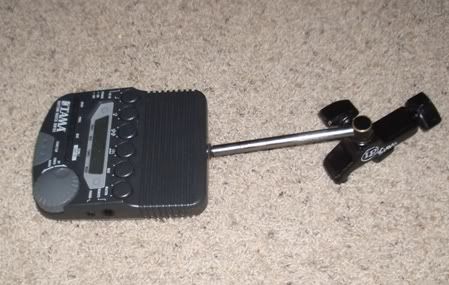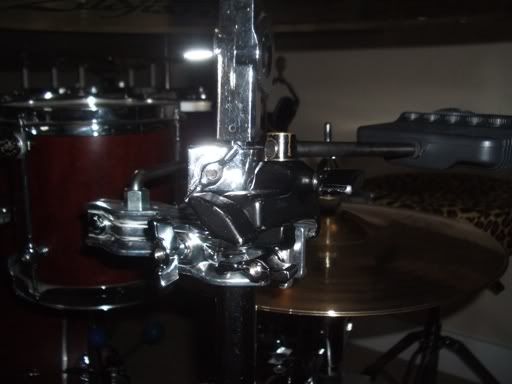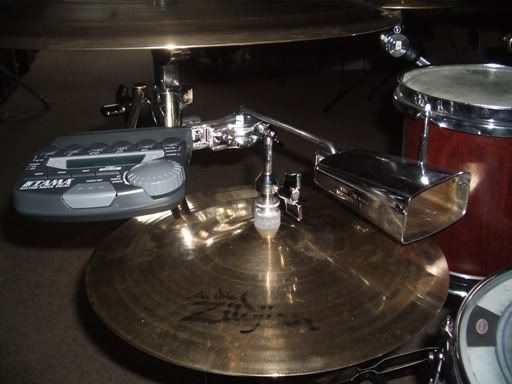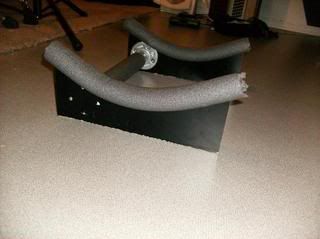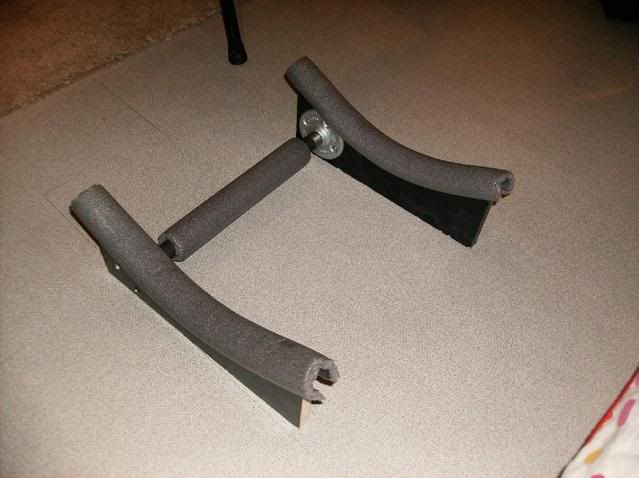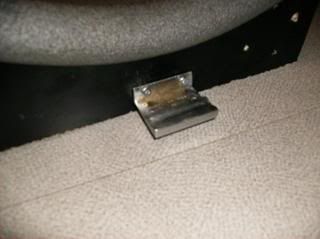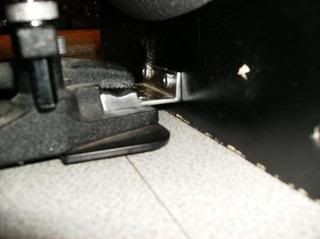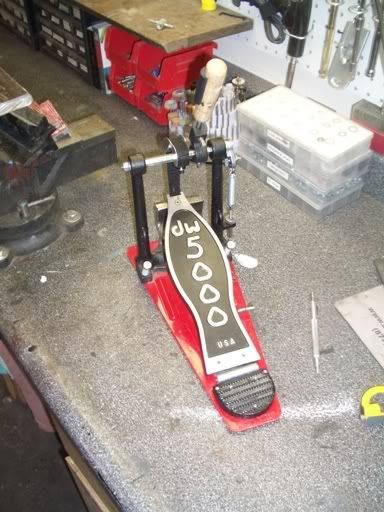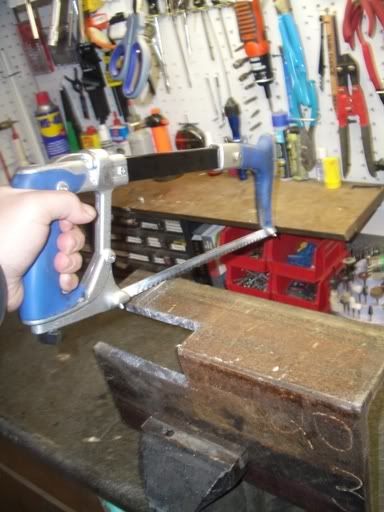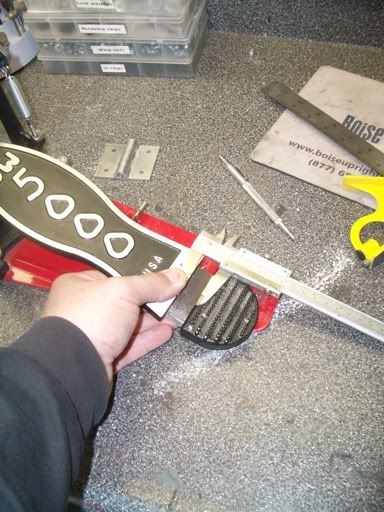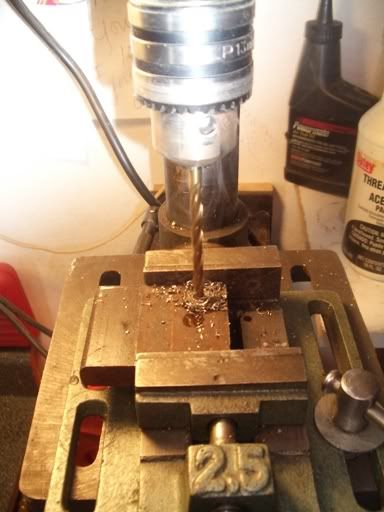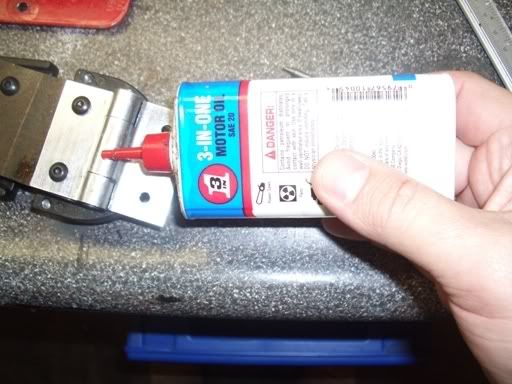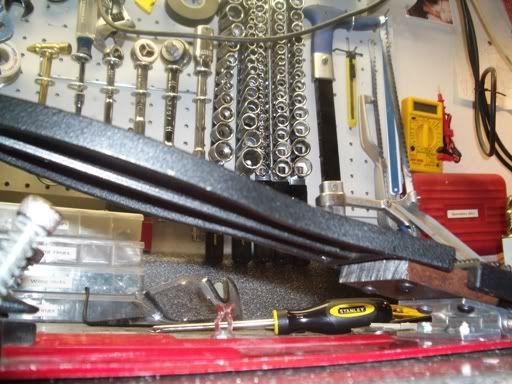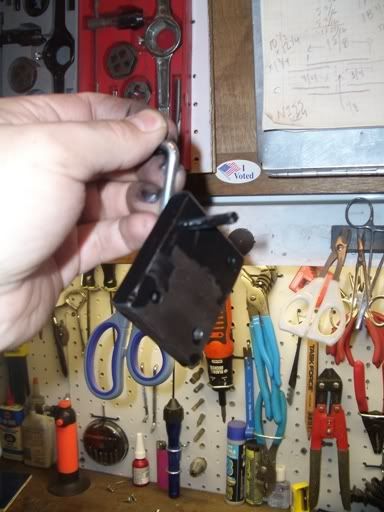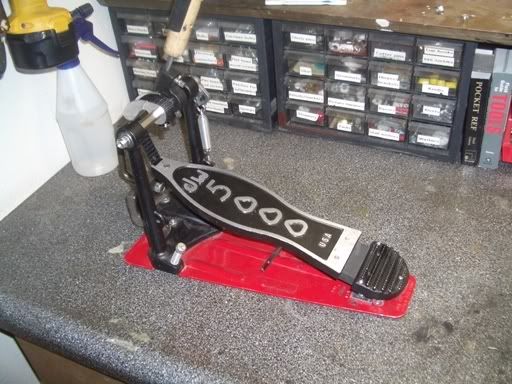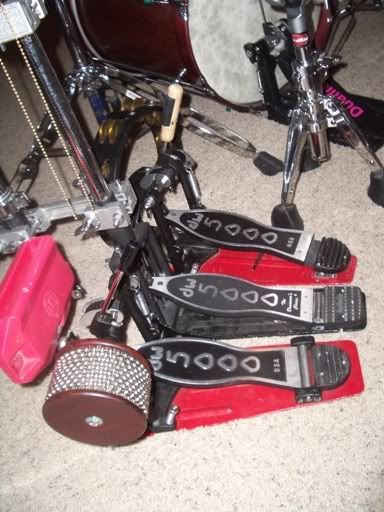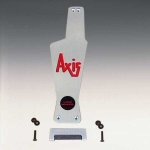CONVERSION OF STANDARD PEDAL TO LONGBOARD
Fourstrings lamented the ridiculous expense of DW longboard and I popped off about how I could convert a standard into a longboard - he called my bluff and I had to try it just to see if I could. Total cost: $2 in bolts, $5 in shop costs, $30 for labor, about two hours of time for work and planning. Basically, I removed the heel plate and joined it to the footboard with a gusset, then attached the hinge to the heel plate.
Pedal before the mod.
The hardest part was fabricating the gusset. I sawed off a chunk of half-inch-thick steel plate. It's overkill, but it's what I had handy and you will never ever have to worry about the gusset failing.
Careful measuring ensured the original dimensions would be carried over to the new pedal.
I drilled holes to mount it to the heel plate and foot plate (you can see the smoke from the burning thread oil).
As long as I was taking things apart, I cleaned and oiled the original hinge.
This is the only permanent modification I had to make to the pedal, drilling a couple of holes to re-mount the hinge. Other than this, the mod is completely reversible.
Putting it all together: checking the fit of the gusset.
Checking of the action of the pedal.
Once I confirmed the fit and function of the gusset, I disassembled everything for finishing. I ground the gusset edges smooth and cleaned off suface rust.
A coat of paint finished it.
During reassembly, I used a Dremel to grind off the bolts and make them flush with the surface of the footboard.
Some Loctite ensured the bolts will stay put.
The finished pedal.
As used in the set.
I have to admit I'm not too fond of the action of a longboard. I've strictly played a standard pedal for 25 years so the longboard feels weird. I imagine if I'd started with a longboard it would feel normal. So I will probably reverse this at some point, but at least I can say I did it and tried it out.



